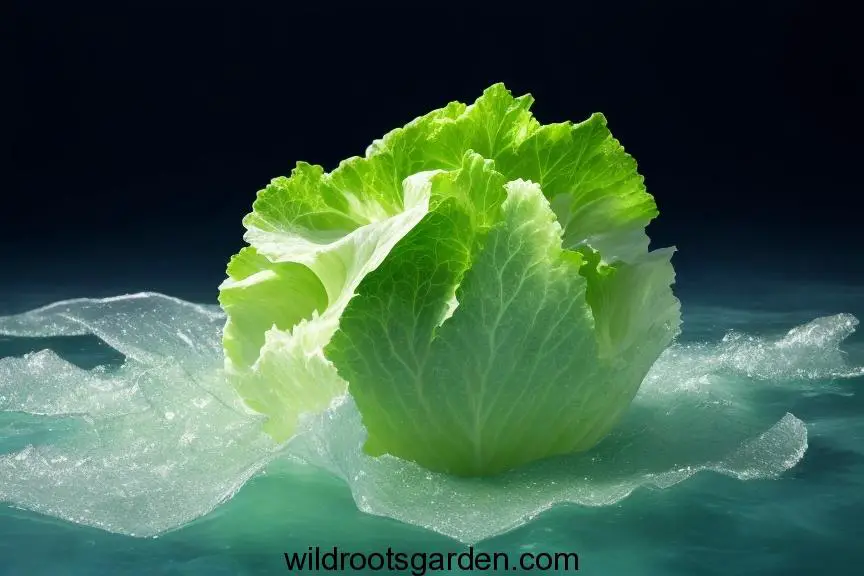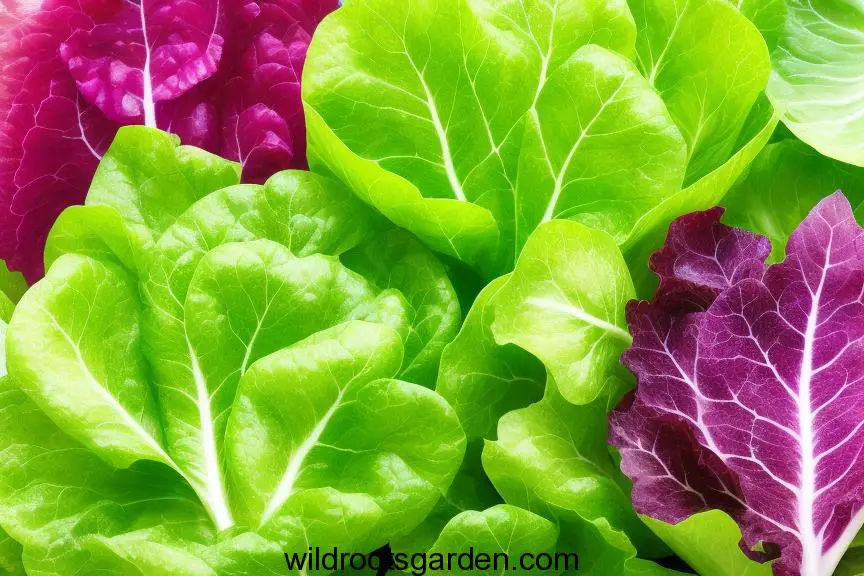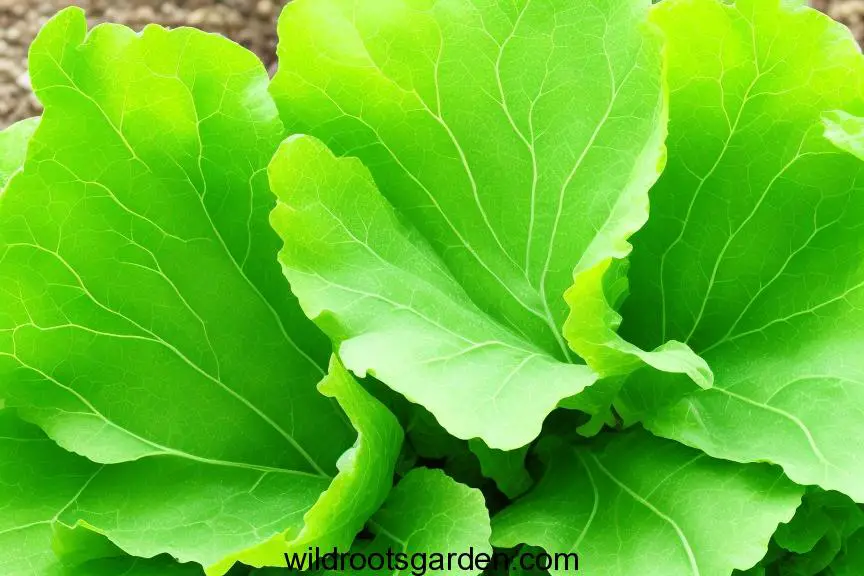Types of Garden Lettuce: The romaine, butterhead, crisphead, and looseleaf varieties of lettuce are the four most common types grown in gardens. Because of the unique flavor and texture of each lettuce variety, it can be used in a wide range of salads, sandwiches, and other dishes. Butterhead lettuce’s delicate, flexible leaves frequently have red or yellow tints. It’s a popular option for salads because of its mild flavor and delicate texture. The head of crisphead lettuce is composed of narrowly spaced leaves. It’s a great alternative for salads because of its flavor and crisp texture. As loose-leaf lettuce leaves develop, a rosette is formed. It is a fantastic option for salads because it is versatile and can be used in various cuisines.
The head of romaine lettuce is made up of long, narrow leaves. It has a powerful flavor, making it a fantastic choice for salads and Caesar salads. Depending on the food you are creating and your particular preferences, you can choose the best sort of lettuce.
JUMP TO TOPIC
- 1 Iceberg Lettuce: The Classic Crisp
- 2 Romaine Lettuce: Nutrient-Packed Delight
- 3 Butterhead Lettuce: Soft and Mild
- 4 Leaf Lettuce: Colorful and Versatile
- 5 Crisphead Lettuce: Sweet and Crunchy
- 6 Batavian Lettuce: Heat-Tolerant Option
- 7 Arugula: The Peppery Green
- 8 Endive: Bitter Elegance
- 9 Frisee: Delicate and Curly
- 10 Mizuna: Asian Flair
- 11 Oak Leaf Lettuce: Delightful Texture
- 12 Lolla Rossa: A Visual Feast
- 13 Summer Crisp Lettuce: Heat-Resistant Gem
- 14 FAQs
Iceberg Lettuce: The Classic Crisp
Iceberg lettuce is a household name, recognized for its crunchy texture and mild flavor. Its tightly packed leaves make it a staple in sandwiches and salads. Despite its sometimes underestimated nutritional value, iceberg lettuce contains vitamins A and K, as well as water content that can help keep you hydrated.

Romaine Lettuce: Nutrient-Packed Delight
Romaine lettuce boasts long, crisp leaves and a slightly bitter taste. Rich in vitamins C and K, as well as dietary fiber, it’s a favorite for Caesar salads. Its robust leaves also make it a fantastic option for grilling.
Butterhead Lettuce: Soft and Mild
Butterhead lettuce, including varieties like Boston and Bibb, has tender, buttery leaves with a subtle flavor. Its leaves are perfect for making wraps and cups for various fillings. This type of lettuce contains small amounts of essential nutrients, including folate.
Leaf Lettuce: Colorful and Versatile
Leaf lettuce comes in a variety of hues, from deep red to light green. It’s often chosen for its vibrant colors and tender leaves. With a mild to slightly peppery taste, leaf lettuce is a versatile addition to mixed salads and sandwiches.

Crisphead Lettuce: Sweet and Crunchy
Crisphead lettuce, exemplified by the famous iceberg lettuce, is known for its tightly packed, crunchy leaves. It’s a refreshing option for salads and offers a satisfyingly sweet taste.
Batavian Lettuce: Heat-Tolerant Option
Batavian lettuce is appreciated for its heat tolerance, making it an excellent choice for summer gardens. Its leaves are thick and crisp, with a mild flavor that works well in sandwiches and salads.
Arugula: The Peppery Green
Arugula, with its distinct peppery and nutty flavor, is a popular choice for salads, pesto, and even pizza toppings. It adds a unique kick to dishes and is a rich source of vitamin K and folate.
Endive: Bitter Elegance
Endive’s slightly bitter taste adds sophistication to salads and appetizers. Its leaves can be used as scoops or cups for various fillings, making it a classy and creative choice.
Frisee: Delicate and Curly
Frisee stands out with its delicate, curly leaves and slightly bitter taste. It adds texture to salads and pairs well with fruits, nuts, and tangy dressings.
Mizuna: Asian Flair
Mizuna, popular in Asian cuisine, has feathery leaves and a mild, peppery flavor. It’s a versatile green that can be enjoyed raw or cooked, and it’s an excellent addition to stir-fries and soups.
Oak Leaf Lettuce: Delightful Texture
Oak leaf lettuce features oak-like leaves with a buttery texture and a slightly nutty taste. Its leaves come in various shades, adding visual appeal to salads and dishes.

Lolla Rossa: A Visual Feast
Lolla Rossa showcases stunning burgundy leaves that add color to any plate. Its tender leaves have a mild flavor, and its visual impact makes it a favorite among culinary enthusiasts.
Summer Crisp Lettuce: Heat-Resistant Gem
Summer Crisp lettuce varieties, such as ‘Sierra’ and ‘Nevada,’ are bred for heat resistance. They maintain their crisp texture even in hot weather, making them ideal for summer salads.
- When choosing lettuce for your garden, it is important to consider the climate in your area, the types of salads you plan to make, and your personal preferences.
- Butterhead lettuce is a good choice for mild-flavored salads, while crisphead lettuce is a good choice for crisp and refreshing salads.
- Looseleaf lettuce is a versatile option that can be used in a variety of dishes, while romaine lettuce is a good choice for Caesar salads and other dishes that require a strong flavor.
- No matter what type of lettuce you choose, be sure to plant it in well-drained soil and water it regularly.
Here are some additional thoughts:
- Lettuce is a cool-weather crop that can be grown in most climates.
- Lettuce seeds should be sown directly in the garden about 2 weeks before the last frost.
- Lettuce plants need full sun and moist soil.
- Lettuce can be harvested when the leaves are young and tender.
- Lettuce can be stored in the refrigerator for up to 5 days.
FAQs
What is the best way to store garden lettuce?
Properly wash and dry the lettuce, then store it in a sealed container or plastic bag in the refrigerator’s vegetable crisper.
Can I grow different lettuce types together?
Yes, you can grow different lettuce types together, but ensure they have similar light and water requirements.
How do I prevent my lettuce from becoming bitter?
Bitterness can be reduced by providing consistent moisture and avoiding high temperatures during growth.
Are there any lesser-known lettuce varieties worth trying?
Absolutely! Lesser-known varieties like Mizuna and Batavian lettuce offer unique flavors and textures.
Can I use lettuce in warm dishes?
Yes, certain lettuce types like Romaine and Arugula can be used in warm dishes, adding a fresh element to cooked meals.


